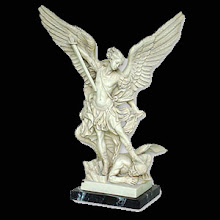Tuesday, December 8, 2009
When the Star of David goes critical ...
Israel’s formidable nuclear arsenal is a fact acknowledged quietly but never publicly and this tiny Jewish state is just about the only nation on earth that can sidestep the prying eyes of the world’s nuclear watchdog.
Attempts by its Arab/Muslim neighbours to go down the same route, to acquire the ultimate weapon even in its crudest forms, have been met with mistrust, fear and condemnation.
Mutually Assured Destruction (MAD) – the nuclear equilavent of "Do onto others as you would have them do onto you", has appeared to work well in halting ambitions and egoes in other theatres of potential conflict.
But the Middle East has never been a geopolitical crucible where pragmatic reason rules. History, religion and the delicate dynamics of the players involved, has necessitated such a special exception to be made for Israel and its nuclear programme.
Israel’s search for nuclear weapons can be traced back to its very inception in 1948. The horrors of the Holocaust clearly demonstrated that as a people, they have been marked and continue to be singled out for elimination. And therefore having the means to inflict a modern Holocaust even as a last ditch move for self-preservation, remains possibly its only insurance against the legacy of Auschwich being revisited.
As early as 1948, Israeli scientists actively explored the Negev Desert for uranium deposits on orders from the Israeli Defence Ministry of Defense. By 1950, they found low-grade deposits near Beersheba and Sidon and worked on a low power method of heavy water production needed for its reactors.
To reward Israel for its participation in the Suez Crisis of 1956, France provided nuclear expertise and constructed a reactor complex for Israel at Dimona (left). Disguised originally as a textile plant, the largely underground complex was capable of large-scale plutonium production and reprocessing.
The United States in its U-2 surveillance flights, soon discovered the facility and by 1958 it was a subject of much discussion between American presidents and Israeli prime ministers. Israel used delay and deception to at first keep the United States at bay.
Two years later Israeli leader David Ben-Gurion went public in December 1960 declaring that Dimona complex was a nuclear research centre built for "peaceful purposes". Since then, Israel continued to use the nuclear option as a soft bargaining chip to secure ever more sophisticated conventional arms from the US for its defence again a growing Arab/Muslim threat.
After French disengagement in the early 1960s, Israel’s nuclear programme continued to march forward. Before the 1967 Six-Day War, Israel felt its still-venerable nuclear facility could be threatened and began assembling its first atomic weapons. Though originally modest in yield, several atomic devices were thought to have been produced along with short- to medium-range delivery systems.
In early 1968, the CIA issued a report concluding that Israel had successfully started production of nuclear weapons. CIA estimates of the Israeli arsenal's size did not improve with time. In 1974, it was estimated that Israel had between 10 and 20 nuclear weapons. The actual size and composition of Israel's nuclear stockpile remains to this day, a subject of speculation.
It is widely reported that Israel had two bombs in 1967, and that then-Prime Minister Eshkol ordered them armed in Israel's first nuclear alert during the Six-Day War. It is also reported that, fearing defeat in the October 1973 Yom Kippur War, the Israelis assembled 13 twenty-kiloton atomic bombs. This now sophisticated nuclear arsenal was deployed and ready for use should the continued existence of the State and its people be threatened with annihilation.
The opposing Arab states had limited their war aims because of their knowledge of the Israeli first-strike nuclear capabilities and the stark reality that the Star of David could and would go critical should the tide of war change in favour or the Crescent Moon.
But Israel’s conventional forces triumphed and the tactical nuclear weapons headed back to storage until the next time. The balance of power, however fragile, had been restored but the future remains uncertain.
By the late 1990s the U.S. Intelligence community estimated that Israel possessed between 75 and 130 weapons, based on production estimates of fissionable material. The stockpile included warheads for mobile Jericho I and Jericho II missiles, as well as bombs for Israeli aircraft, and may include other tactical nuclear weapons of various types.
The Jericho II (left) is a road-mobile, two-stage, solid-propellant missile with an approximate range of 1500 kilometers and a reported payload of 1000 kilograms. It is generally believed that the missile has been designated a nuclear mission given its payload and flight profile. Its dramatically increased range and accuracy over the Jericho I puts most Arab capitals and the southern areas of the former Soviet Union within its deadly crosshairs.
Some published estimates have speculated that Israel might have had as many as 400 nuclear weapons by the late 1990s. This estimate is widely believed to be heavily exaggerated, and that Israel's nuclear weapons inventory may include less than 100 nuclear weapons. Stockpiled plutonium could be used to arm additional weapons quickly should the need ever arise again.
Israel has shown a willingness to go it alone to prevent The Bomb from being acquired by its Muslim neighbours.
On June 7, 1981 Israeli warplanes struck the Osirak nuclear facility near Baghdad. This "unprovoked" action by Israel was a pre-emptive first strike to deny Iraq the capability of producing nuclear weapons, weapons Israeli intelligence believed were in the works. Iraqi defenses were taken by surprise and opened fire too late. In one minute and twenty seconds, the reactor lay in ruins. The IAF planes returned to base without losses.
Immediately following the raid, Israel announced: “Under no circumstances will we allow an enemy to develop weapons of mass destruction against our people” – a bold and not uncharacteristic warning from a nation which is paranoid to the extreme when it comes to defence.
Israel's September 6 2007 attack on Syria's al-Kibar nuclear facility surprised the world — Syria most of all. The operation, executed by the Israeli Air Force, was reminiscent of Israel's 1981 attack on Iraq's Osirak reactor, but with two noticeable differences. First, Israel remained silent following the al-Kibar bombing, while in 1981 it boasted publicly about the Iraq strike even before the pilots had returned. Second, whereas the international community knew of Saddam Hussein's nuclear plans in 1981, few were aware of the extent of Syria's nuclear program in 2007.
Still the question remains how long can this fragile balance of power be maintained. It appears to be only a matter of time before an Arab nation joins the nuclear fraternity - admittedly by the back door. And when present speculation of that day becomes cold hard fact, would Israel strike first?
The absence of alternatives makes pushing that launch button, an almost foregone conclusion. Perhaps such an end would be fitting, fulfilling the prophesy outlined in the Bible's Book of Revelations that the end of the world would come to pass on a dusty Israeli plain called of Har Megiddo (Hebrew: הר מגידו), meaning "Mountain of Megiddo" or as its it better known today - Armageddon.
Subscribe to:
Post Comments (Atom)
+copy.jpg)























No comments:
Post a Comment